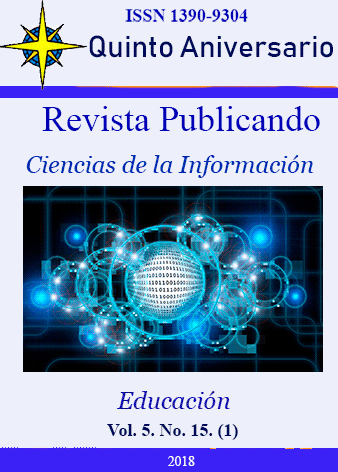Resumen
In wireless networks, using traditional unicast routing algorithm is inappropriate due to broadcast nature and spatial diversity of wireless links. Selecting a set of N nodes as next hop in wireless networks instead of one node, increases delivery probability relative to N. This fact led to emerging a new routing schema in wireless network in recent years naming Opportunistic Routing. Opportunistic routing takes advantages of wireless networks to get higher performance metrics by selecting multiple nodes as next hop for each node instead of selecting one node as in traditional routing algorithms, Our proposed Opportunistic routing algorithm (named Fragmented Opportunistic Routing) uses local information and easy to be applicable. It tolerates nodes' failure and changes in network and upon a change in a part of network; there is no needs that all the nodes in network reconfigure their Opportunistic Routing Tables.
Referencias
Bellman, R., On a Routing Problem. Quarterly of Applied Math, 1958. 16(1): p. 87–90.
Douglas S. J. De Couto, D.A., John Bicket,Robert Morris, A High-Throughput Path Metric for Multi-Hop Wireless Routing. 2003.
Perkins CE, B.P., Dsdv routing over a multihop wireless network of mobile computers. Ad hoc networking, 2001
Akyildiz IF, K.I., Wireless sensor and actor networks: Research challenges. Ad Hoc Networks, 2004. 2(4): p. 351–367.
Akyildiz IF, S.W., Sankarasubramaniam Y, Cayirci E, A survey on sensor networks. 2002: p. 102–116.
Akyildiz IF, W.X., A survey on wireless mesh networks. Communications Magazine, IEEE, 2005. 43(9): p. S23–S30.
Cerpa A, E.J., Estrin D, Girod L, Hamilton M, Zhao J Habitat monitoring: Application driver for wireless communications technology, in ACM SIGCOMM Workshop Data Comm. 2001: Latin America and the Caribbean, Costa Rica.
Zorzi, M. and R.R. Rao, Geographic random forwarding (GeRaF) for ad hoc and sensor networks: energy and latency performance. Mobile Computing, IEEE Transactions on, 2003. 2(4): p. 349-365.
Dijkstra, E.W., A Note on Two Problems in Connection with Graphs. Numerische Mathematik, 1959. 1(3): p. 269–271.
DUBOIS-FERRIERE, H., anypath routing. 2006.
Biswas, S. and R. Morris, ExOR: opportunistic multi-hop routing for wireless networks. SIGCOMM Comput. Commun. Rev., 2005. 35(4): p. 133-144.
Henri Dubois-Ferriere, M.G., Martin Vetterli, Least-Cost Opportunistic Routing. 2007 Allerton Conference on Communication, Control, and Computing, 2007.
Hatami, M. and Ameri Siahooei, E., Examines criteria applicable in the optimal location new cities, with approach for sustainable urban development. Middle-East Journal of Scientific Research, 2013. 14(5): p. 734-743.
Zhong, Z., et al., On selection of candidates for opportunistic anypath forwarding. SIGMOBILE Mob. Comput. Commun. Rev., 2006. 10(4): p. 1-2.
Darehshoorzadeh, A., L. Cerdí -Alabern, and V. Pla, Modeling and comparison of candidate selection algorithms in opportunistic routing. Computer Networks, 2011. 55(13): p. 2886-2898.
Shafieardekani, M., and Hatami, M., Forecasting Land Use Change in suburb by using Time series and Spatial Approach; Evidence from Intermediate Cities of Iran. European Journal of Scientific Research, 2013. 116 (2): p. 199-208.
Cerdí -Alabern, L., V. Pla, and A. Darehshoorzadeh. On the performance modeling of opportunistic routing. 2010. Pisa.
Laufer, R., H. Dubois-Ferriere, and L. Kleinrock. Multirate Anypath Routing in Wireless Mesh Networks. in INFOCOM 2009, IEEE. 2009.
Ying Zhang, G.S., Gyorgy Balogh, High-Level Sensor Network Simulations for Routing Performance Evaluations. 2007.
Usted es libre de:
Compartir — copiar y redistribuir el material en cualquier medio o formato
Adaptar — remezclar, transformar y construir a partir del material
La licenciante no puede revocar estas libertades en tanto usted siga los términos de la licencia
Bajo los siguientes términos:
Atribución — Usted debe dar crédito de manera adecuada, brindar un enlace a la licencia, e indicar si se han realizado cambios. Puede hacerlo en cualquier forma razonable, pero no de forma tal que sugiera que usted o su uso tienen el apoyo de la licenciante.
NoComercial — Usted no puede hacer uso del material con propósitos comerciales.
CompartirIgual — Si remezcla, transforma o crea a partir del material, debe distribuir su contribución bajo la lamisma licencia del original.
